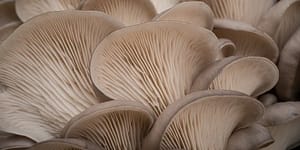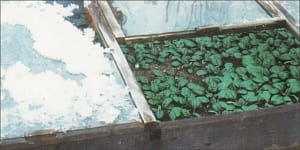Saving the Soil, Saving Ourselves

The soil undeniably sustains us, without it there would be no gardens, no farms, no livestock– nothing. As we continue to overuse and undernourish the soil, we are shorting both the earth and ourselves. These three books map out different approaches to revitalizing our soil through regenerative agriculture.
“In healthy, living soils covered with green plants for much of the year, the carbon supply for beneficial soil microbes can be nearly endless. I cannot emphasize this enough: This process is absolutely key! According to soil ecologist Dr. Christine Jones, the formation of fertile topsoil can be breathtakingly rapid once the biological dots have been joined. The sun’s energy, captured in photosynthesis and channeled from aboveground to below ground as liquid carbon, fuels the microbes that solubilize minerals. A portion of the newly released minerals enable rapid humification in deep layers of soil, while others are returned to plant leaves, facilitating an elevated rate of photosynthesis and increased production of plant sugars. This positive feedback loop makes soil-building somewhat akin to perpetual motion.” —Gabe Brown
Featured Excerpts:
The Importance of Planting Cover Crops
|
|
|---|

Featured Excerpts:
Emergence of the Mechanical Mind and Its Dire Implications
Agri-Culture: Source of a Healthy Culture, Society and Mother Earth
From the Group Up: A Call for Regenerative Agriculture
|
|
|---|

Featured Excerpts:
Rethinking Pests, Invasive Species, and Other Paradigms
|
|
|---|
Recommended Reads
Recent Articles
What’s so great about oyster mushrooms? First, you can add them to the list of foods that can be grown indoors! They are tasty, easy to grow, multiply fast, and they love a variety of substrates, making oyster mushrooms the premium choice. The following is an excerpt from Fresh Food from Small Spaces by R. J.…
Read MoreEver heard the phrase, “always follow your nose?” As it turns out, this is a good rule of thumb when it comes to chicken manure. Composting chicken manure in deep litter helps build better chicken health, reduce labor, and retain most of the nutrients for your garden. The following is an excerpt from The Small-Scale Poultry…
Read MoreIn her book, The Art of Science and Grazing, nationally known grazing consultant Sarah Flack identifies the key principles and practices necessary for farmers to design, and manage, successful grazing systems. This book is an essential guide for ruminant farmers who want to crate grazing systems that meet the needs of their livestock, pasture plants,…
Read MoreThis long-lived perennial legume is used for forage and erosion control. Kudzu is edible with many medicinal uses and other applications. Pollinators of all kinds love its prodigious lavender blooms!
Read MoreAre you ready to get a jump-start on the gardening season? With a cold frame, you can get started now. A cold frame harnesses the sun’s heat before it’s warm enough to let unprotected seedlings growing outside. Essentially, it consists of a garden bed surrounded by an angled frame and covered with a pane of…
Read More








